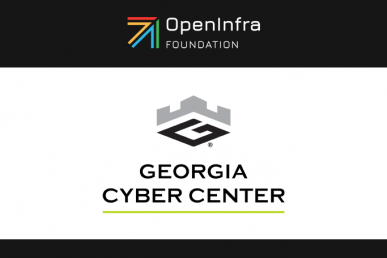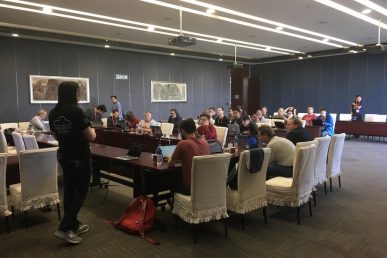Many people including prospective users, analysts, even sales engineers looking to set up proof-of-concepts (PoCs), often ask the following questions:
- What workloads can OpenStack be used for?
- How do we make sense of the many OpenStack services if we just want to do x or y?
- Why are there so many OpenStack services?
- How can we gain experience with OpenStack in real-world application environments?
The answers are two-fold. For one, OpenStack is flexible and yes, there are choices to be made. And, yes, there are more than 60 services to choose from.
However, no one workload uses them all—or even many. OpenStack software enables the majority of workloads with a handful of projects, and offers plug-and-play capability for additional functionality.
Help and clarity is now available in the form of workload reference architectures. The Enterprise Working Group in conjunction with industry-leading users, developed reference architectures for the most popular workloads on OpenStack—three-tier web applications, big data and eCommerce. Each reference architecture shows the solution architectures pictorially, describes the seven or fewer projects to use and most importantly, each includes deployment templates that will install the workload on an existing OpenStack cloud. The target cloud must have the six-to-seven services installed, including Heat to run the template itself. Future reference architectures will offer more sample code deployment options.
Sales engineers who want to show real workloads to prospective clients, new users within an existing OpenStack company, users who want to try new workloads, and anyone who just wants to see what OpenStack is all about, can try them out. Use your companies’ existing cloud or access a public cloud on a pay-per-use basis. Many OpenStack distribution vendors offer quick start packages to easily build a PoC cloud. Just be sure to read the reference architecture and request the OpenStack services required for the workload you want to try out.
Then, download one of the reference architectures’ Heat templates to install the full workload environment. The reference architectures include a sample open source application so you can see how it all works. Each workload is complete with load balancers, security groups, virtual storage, database backups, and more—a total, real-world solution. Start from these sample configuration web pages to access the reference architecture document and the deployment templates.
- Web applications installs full LAMP software and WordPress as the application.
- Big data installs a complete Hadoop environment based on Ambari software.
- eCommerce does the same using OpenCart as the eCommerce application.
The team is working on new workload reference architectures. Now is the time to let us know which workloads you need and if you or a working group can help. For example, the Scientific Working Group is considering high throughput computing and high performance computing; the Enterprise WG is planning one with containerized applications on bare metal, and other teams are looking into specific NFV and edge computing use cases.
Get involved!
We’d love your feedback on how you took advantage of the reference architectures; what worked and what didn’t. Did the real-life PoC environment help you close business? Which workloads and sample application deployment methodologies are important for the future? Would you like to join a planned project or start a new one?
Please send feedback to the Reference Architecture team lead, cloud architect Yih Leong Sun (“Leong”), at [email protected]. Or join these Enterprise WG activities at the OpenStack Summit in Boston, May 8-11, 2017:
- Learn about application migration and deployment patterns at this Foundation lightning talk, Tuesday, May 9, 10:45-11:05am, Hynes Convention Center, room 206—and receive your copy of the new book “OpenStack Essentials: Designing, Migrating and Deploying Applications”. This talk will be recorded for later viewing.
- Chat with Enterprise WG members over lunch on Wednesday, May 10, Hynes Convention Center, Level 3, room 309, 12:30-1:50pm. We’ll break bread and get to know each other better.
- Enterprise WG working session, Thursday, May 11, Hynes Convention Center, Level 2, room 201, 3:10-3:50pm. All are welcome to participate at any time, in person or remotely, at https://etherpad.openstack.org/p/Enterprise_WG_Boston.
- Increasing Direct Enterprise Engagement in the EWG, Thursday, May 11, Hynes Convention Center, Level 2, room 201, 4:10-4:50pm. Join Justin Rackliffe from Fidelity Investments in this open discussion on how the Enterprise WG can help your organization meet and surpass its OpenStack objectives. What would you like to see? How can your voice be heard?
Cover Photo // CC BY NC
- Demystifying Confidential Containers with a Live Kata Containers Demo - July 13, 2023
- OpenInfra Summit Vancouver Recap: 50 things You Need to Know - June 16, 2023
- Congratulations to the 2023 Superuser Awards Winner: Bloomberg - June 13, 2023

)










